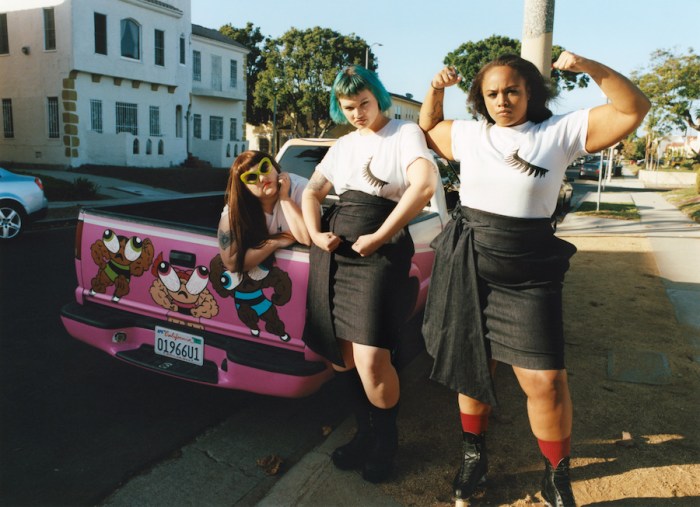Pockets weren’t invented in the 1700s, but that was arguably the era when they were perfected — on the coats of wealthy men.
Having possessions is the ultimate signifier of status, so it makes sense that if you were wealthy enough to, say, carry money instead of bartering for goods, you’d do it in the most ornate way possible.
“The 18th century is a point where we can see in the silhouette of men’s waistcoats, the pockets are visible and usually highly decorated,” says Caela Castillo, co-curator of the Fashion Institute of Technology’s latest exhibit Pockets to Purses.
The fascinating showcase of clothing and accessories, which is free and open now through March 31 at the Museum at FIT, examines the three centuries of how we carried things and what it said about us.
Nowhere in the exhibit is the idea of pockets as privilege better signified than in a Revolutionary War-era portrait of George Washington on the battlefield, a small diary peeking out from his coat pocket.
Behind him on a horse is an enslaved man, whose simple clothes would not have had any such practical features.
“A pocket would be a symbol of status,” Castillo explains. “Slaves specifically were not allowed to have pockets because they believed it would be the gateway to dangerous activity. It gives them power.
“There’s just this level of difference at something so simple as a pocket, something we take for granted.”
At the same time, women who had the privilege of possessions (their husbands often carried whatever they were thought to need) carried them in a plain tie-on pocket under their large skirts.
Kind of a boring way to go about your business, so it’s not surprising that once waistcoats were no longer fashionable for men, their heavily embroidered pockets would be peeled off and transformed into the first ladies’ purses in the early 1800s.
“It just goes full circle,” Castillo laughs. “With the silhouettes in the early 1800s, there’s really no room for those pockets, so that becomes a different issue. It would’ve disrupted those clean, straight lines.”
The exhibit goes on to explore the first-ever miser purses, which were actually more like beaded portable pockets made by women at home for loved ones (think of them as 19th-century friendship bracelets).
For lower-class women, miser purses also presented a chance at freedom through self-sufficiency by selling them.
There’s so much more about the history of both pockets and purses, and the often gender-based divides about who can wear which. There’s Christian Dior’s famous quip from the ‘80s that “Men have pockets to keep things in, women for decoration,” while in the ‘90s, Joey Tribbiani’s so-called “Friends” shamed him for carrying what they mockingly called a “man purse.”
Maybe someday, we’ll all be free to accessorize the way we like.
























